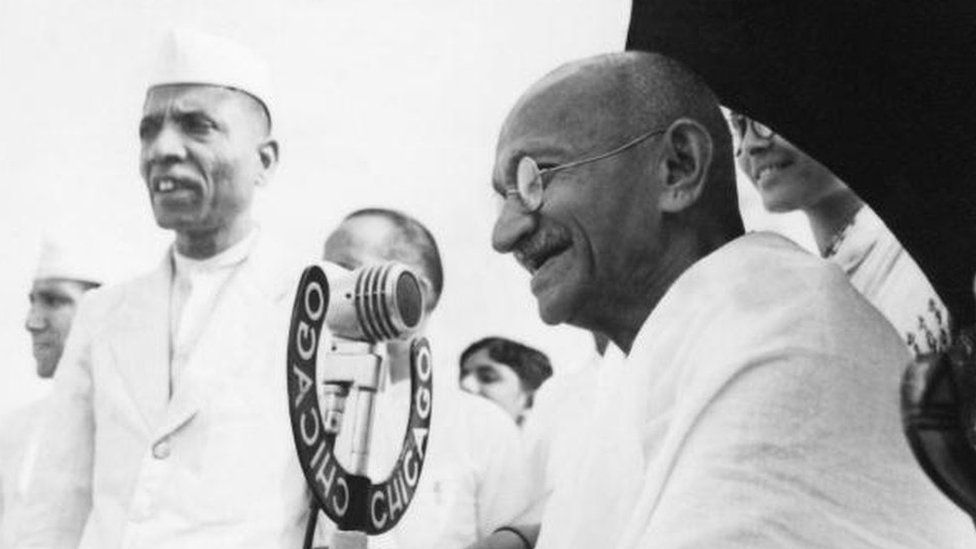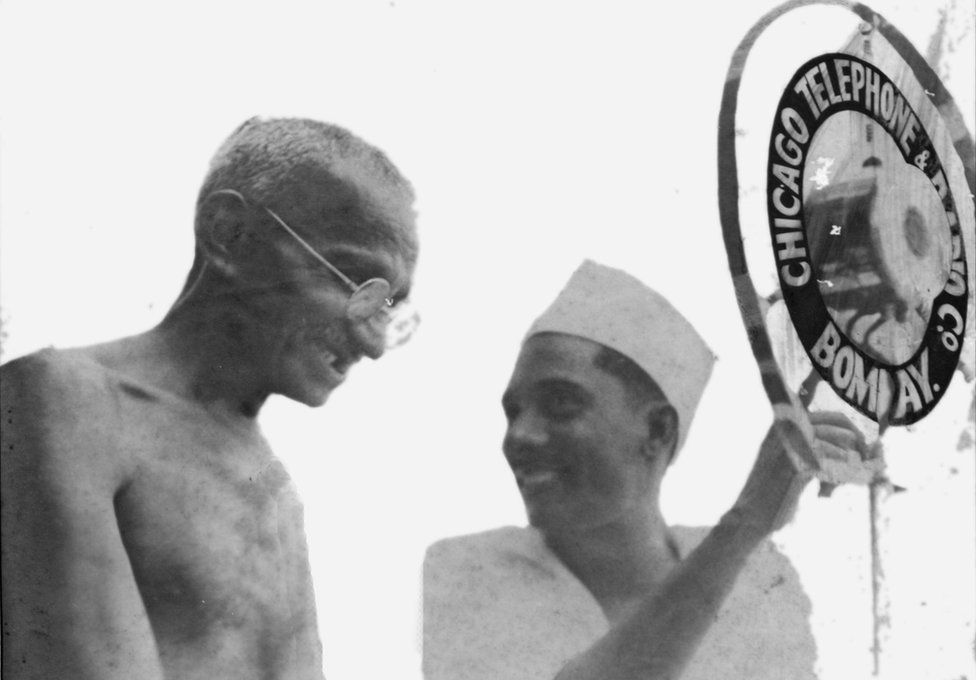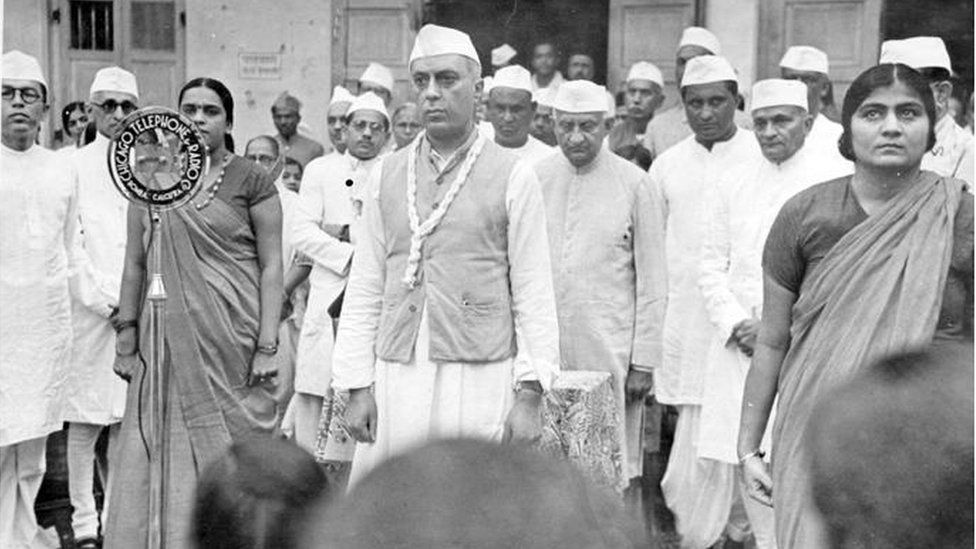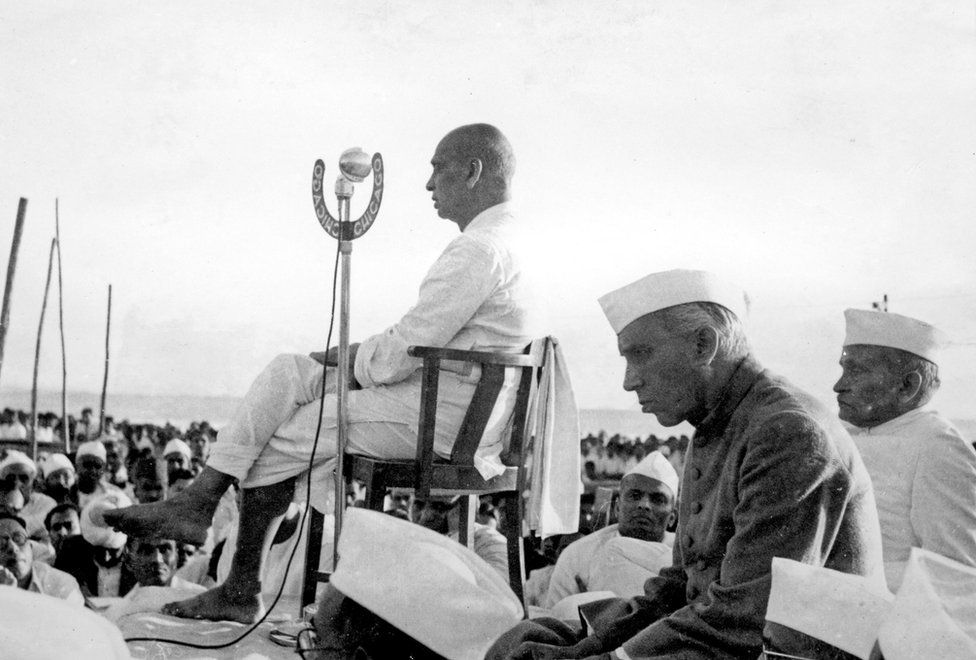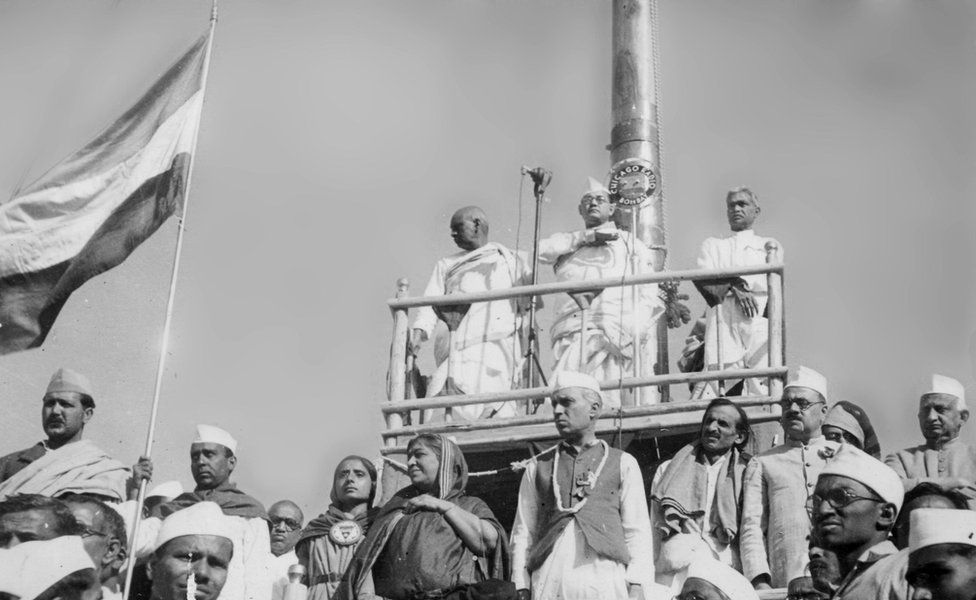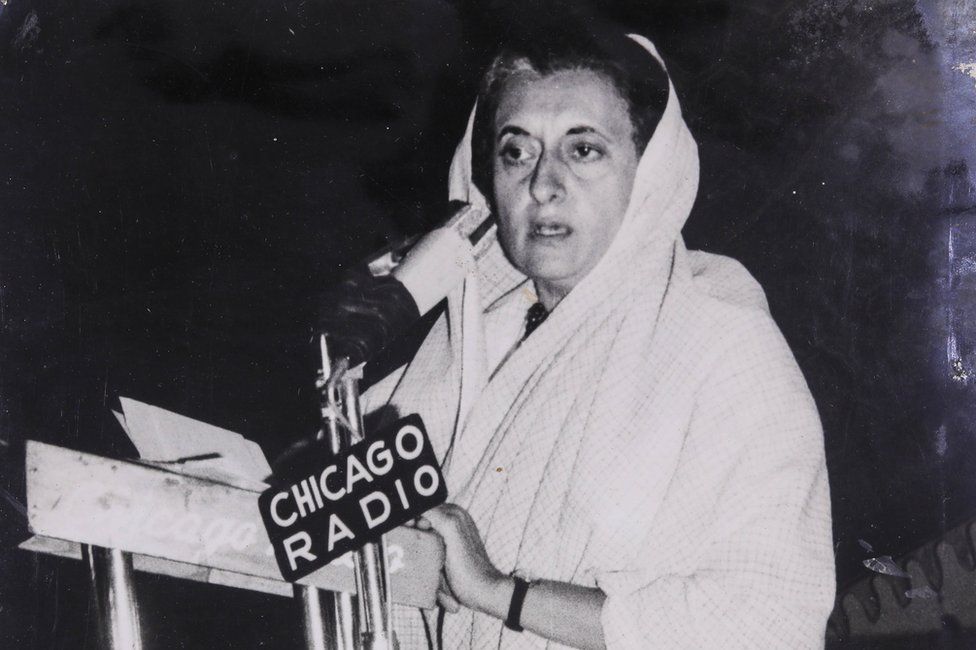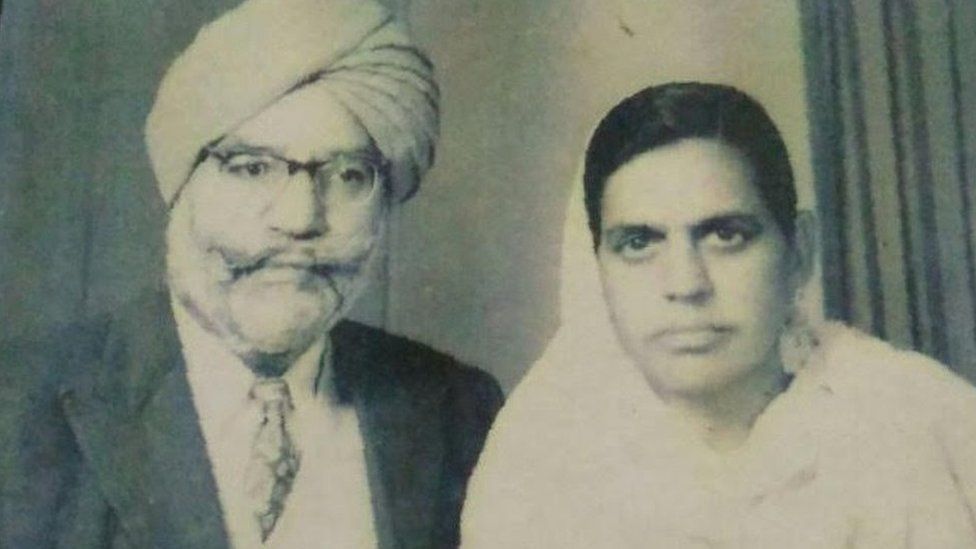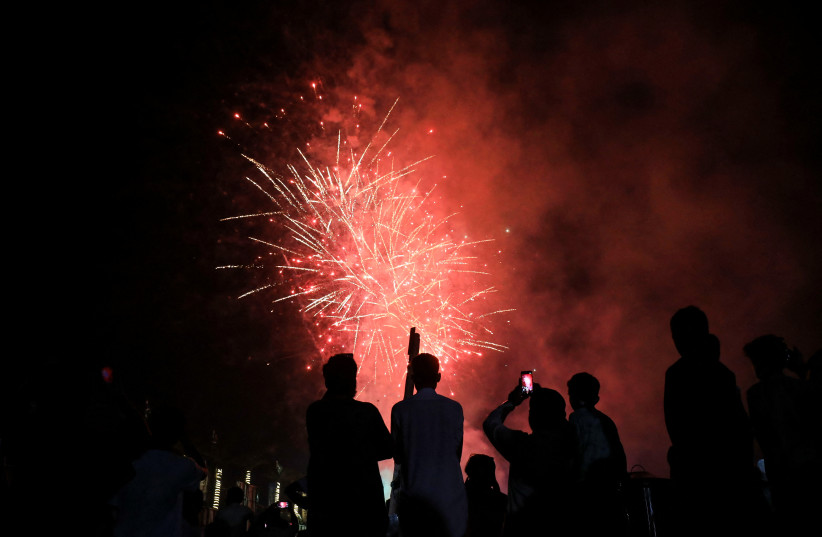OP-ED
The flag and the bulldozer: As India turns 75, it slides deeper into fascism
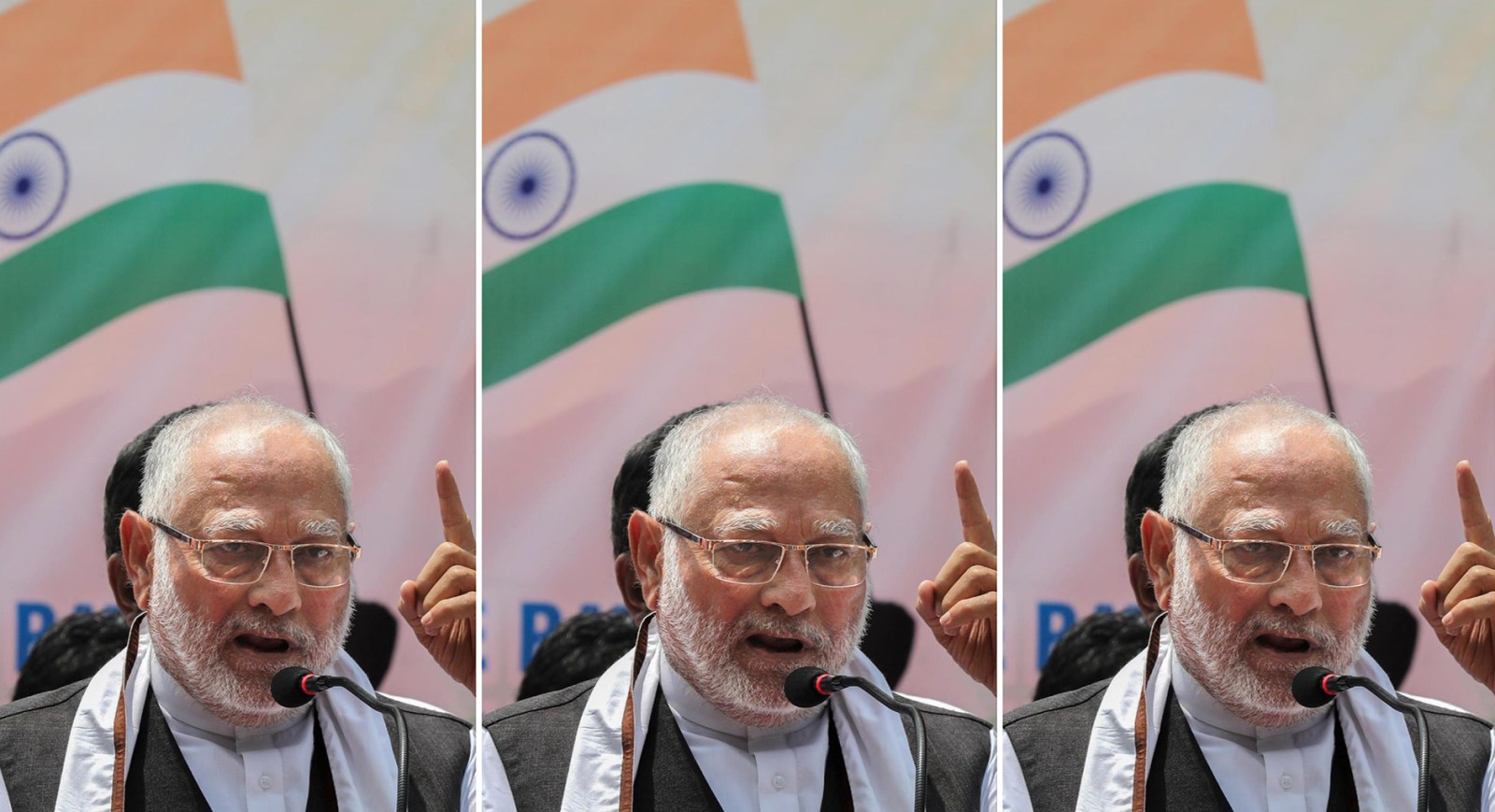
The Indian Prime Minister Narendra Modi wants every Indian citizen to participate in the hoisting of the national flag. (Photo: EPA-EFE / RAJAT GUPTA)
By Shuddhabrata Sengupta
14 Aug 2022 0
Monday, 15 August marks the 75th anniversary of Indian independence. But rather than celebrating, millions are mourning the death of the dream of secularism, tolerance and strength in diversity. Instead of pursuing these founding ideals, the government of Narendra Modi is locking up activists, persecuting minorities and suffocating democracy.
Indian Prime Minister Narendra Modi wants every Indian citizen to fly the national flag — the saffron, white and green tricolour with a blue Ashoka wheel in the centre of the white band — at their homes and workplaces, to mark the 75th anniversary of Indian independence, on Monday, 15 August. The initiative is called “Har Ghar Tiranga”, or “A Tricolour for Every Home”.
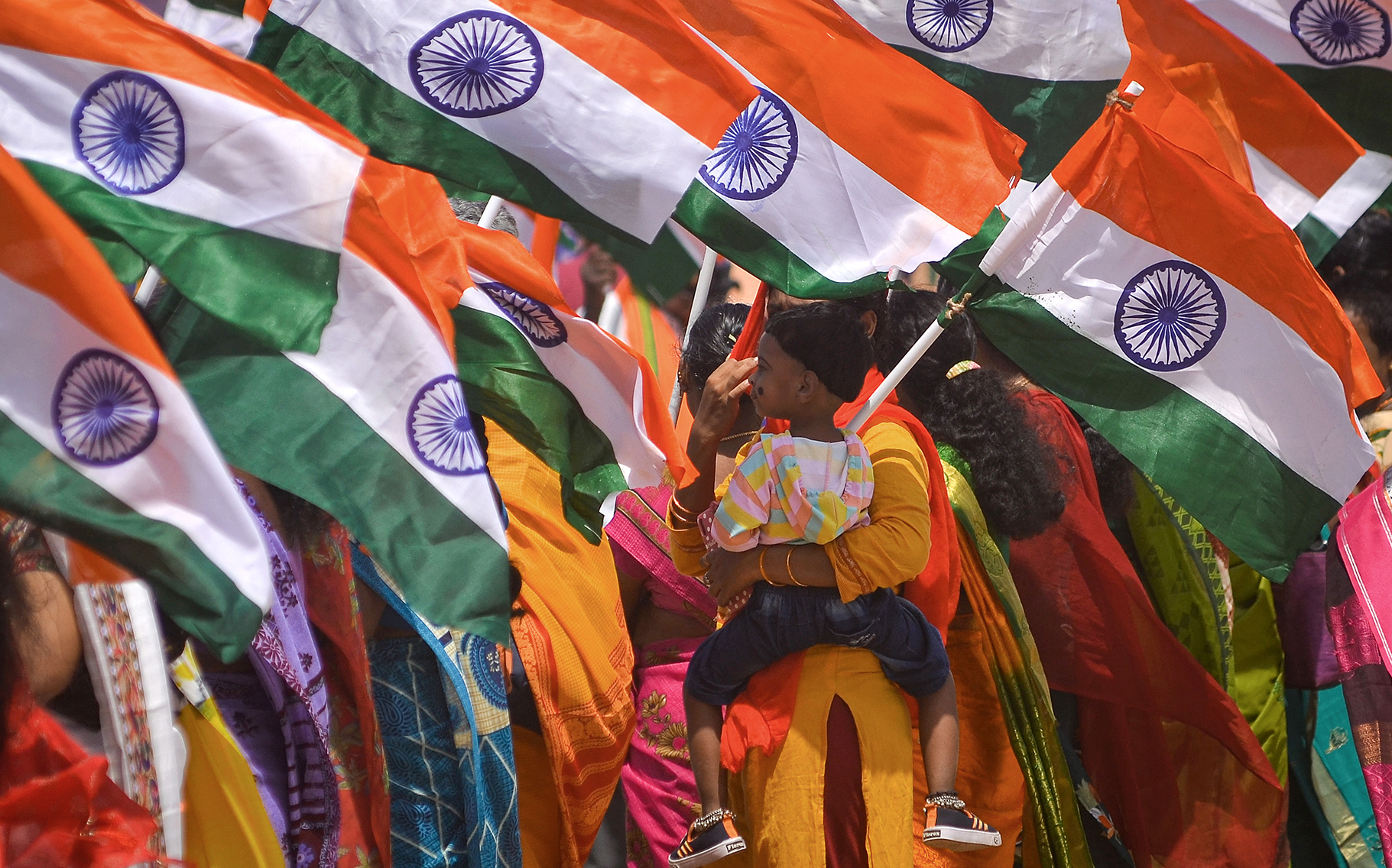
flag during a boat rally to celebrate the 75th Independence Day of India, at Neelangarai beach, in Chennai, India, 10 August 2022. (Photo: EPA-EFE / Idrees Mohammed)
But a man called Wasim Sheikh, an amputee who lost both his hands in an accident, and sold tea from a makeshift kiosk next to a cinema in the town of Khargone in the central Indian state of Madhya Pradesh, does not have a place to hoist the flag.
His kiosk (which was also his home) was demolished on 11 April during protests against hate speech targeting Muslims. He was accused of throwing stones, despite not having hands with which to throw them. The apparatus of law and order decided that such impudence had to be punished.

Sheikh gave an interview to a reporter lamenting the loss of his home and was then admonished (and bribed, with a small sum of money) by the district authorities into recanting his lament. He did as he was told, and then quietly recanted his recantation. Perhaps the truth of the destruction of the only means of his livelihood was too stark to let go of entirely. Sixteen homes and 29 shops were demolished by bulldozers on just that one day in April.
Almost two months later, on the evening of 12 June, the house of Afreen Fatima, a student activist, was also demolished, in the neighbouring state of Uttar Pradesh.
Fatima had been deeply involved with the popular movement that emerged in the winter of 2019 and early 2020 against amendments to the Indian Citizenship law that would have, for the first time, laid the foundations of a legal basis for the recognition of unequal claims to Indian citizenship based on religious identity, disadvantaging Muslim claims to Indian citizenship. Her father, Javed Muhammad, a well-known social activist in the town of Prayagraj (formerly Allahabad) had made appeals for peace during a moment of grave sectarian provocation by extremist Hindus.
The local administration, which had backed the Hindu extremists, retaliated by demolishing the house of Fatima, her father, and the entire family, ostensibly because it featured “encroachments”, without prior notice. The house was in Fatima’s mother’s name, who had played no role in any protest. The demolition seemed to be punishment, specifically, for the activism embraced by Fatima and her father.
In Kanpur, another town in Uttar Pradesh, the authorities “demolished a building owned by a ‘close associate’ of one of the accused, a Muslim, who was alleged to have taken part in a protest”.
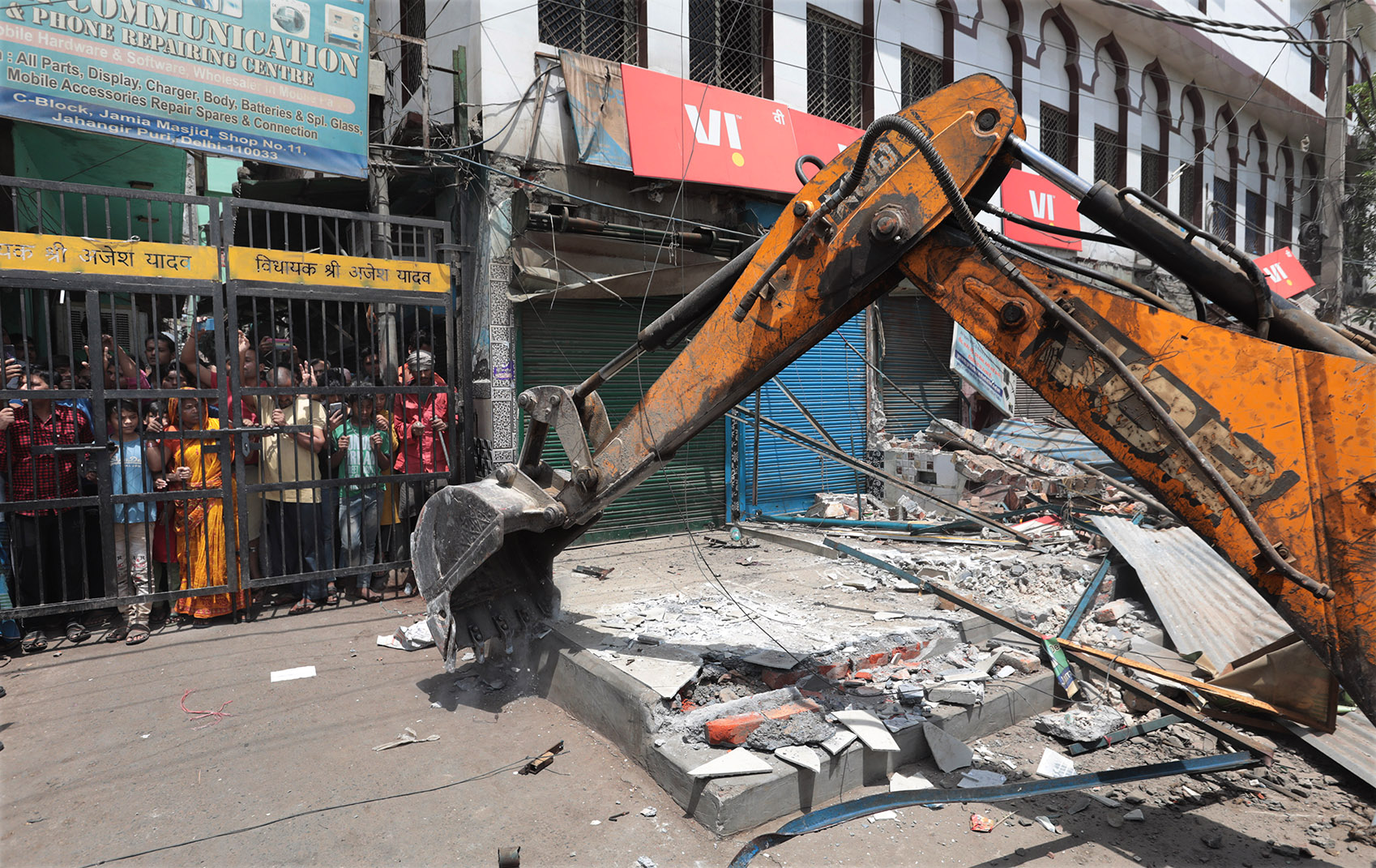
The demolitions, which started occurring in more towns, seemed unstoppable.
What does this mean?
Due legal process
First, there is no law in the Indian juridical system by which authorities can demolish the house of an accused, without it being established that they are guilty, by due legal process.
But let’s leave even that aside for the moment. There is no legal basis for any authority punitively demolishing a house built by a person who is not even an accused, but his associate. “Guilty by association” is not a legal principle recognised under any jurisdiction anywhere in India.
The state is repeatedly violating its own laws. The demolitions are continuing. Often, the bulldozers are sanctioned by the judiciary, despite the fact that the principle of “collective punishment” is in complete contravention of any form of justice. A demolition inevitably cripples an entire family, or even a neighbourhood, due to punitive action triggered solely by allegations against particular individuals, and that too before any guilt is established. This completely sacrifices the specific worth of the dignity of any individual at the altar of the fiction of the culpability of a community.
This means that what is being punished is a community, not an individual. It is a form of punishment based on arranging groups within the population along ascending and descending ladders of predetermined guilt and innocence.
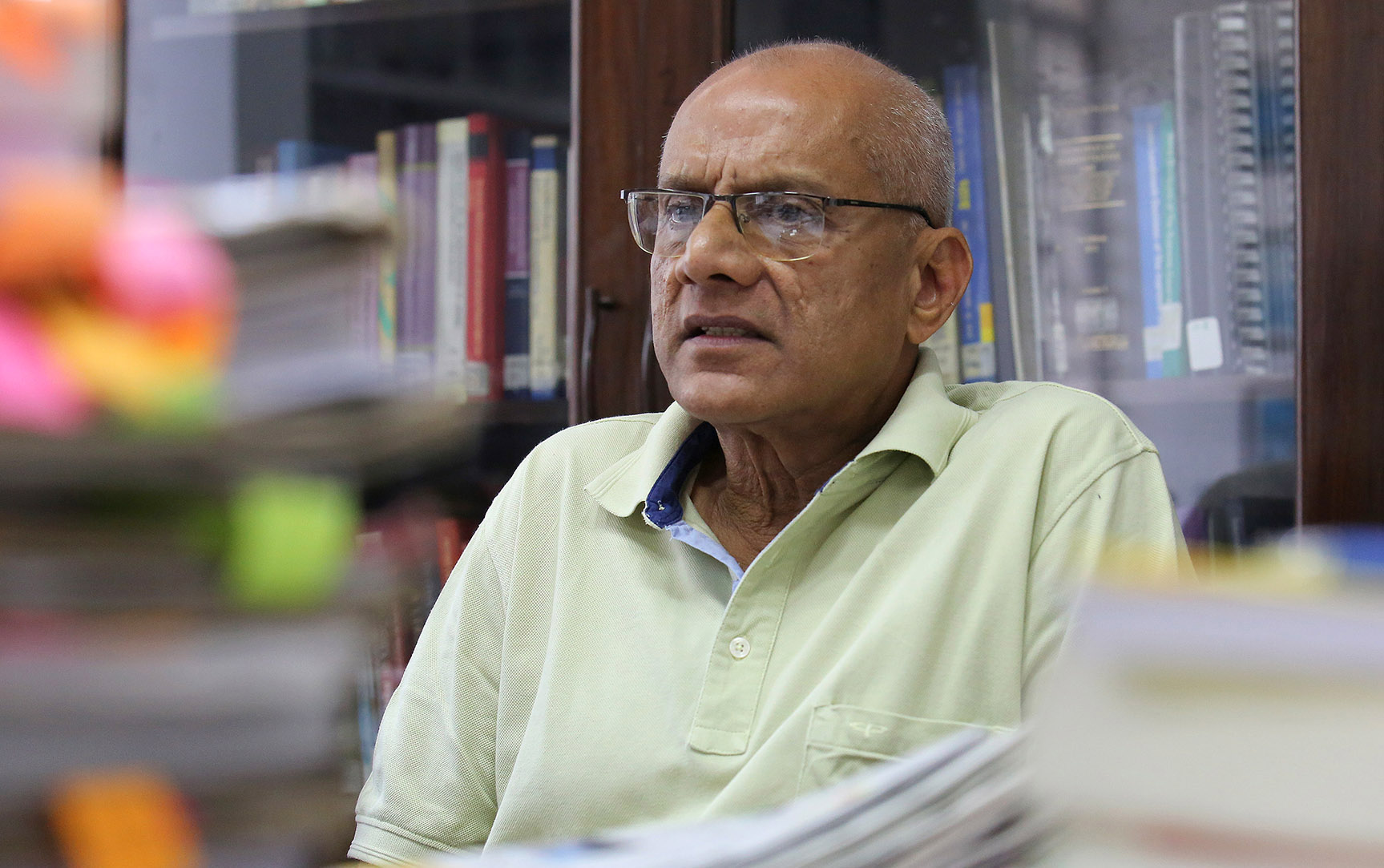
This has led, Colin Gonsalves, a leading human rights activist, to say: “The situation in democratic India today is the same as it was in apartheid South Africa, where the racist government wreaked havoc in black settlements. Have we sunk so low? Is democracy in India real or fake? What joy does it give judges to allow such demolitions to continue? What faith can be retained in such a judiciary where instances of such cruelty are allowed to pass?”
Every demolished house marks a zone of absence, not just of the space to hoist a flag, but also a void in the law.
Population under siege
But the quasi-mandatory hoisting of actual flags by citizens is not enough by itself. People are also being asked to post pictures and videos of the flag-hoisting on their social media with the appropriate hashtags, and to tag the GPS coordinates of the flags themselves. They are also required to embellish the “display pics” or DPs on their social media handles with the tricolour
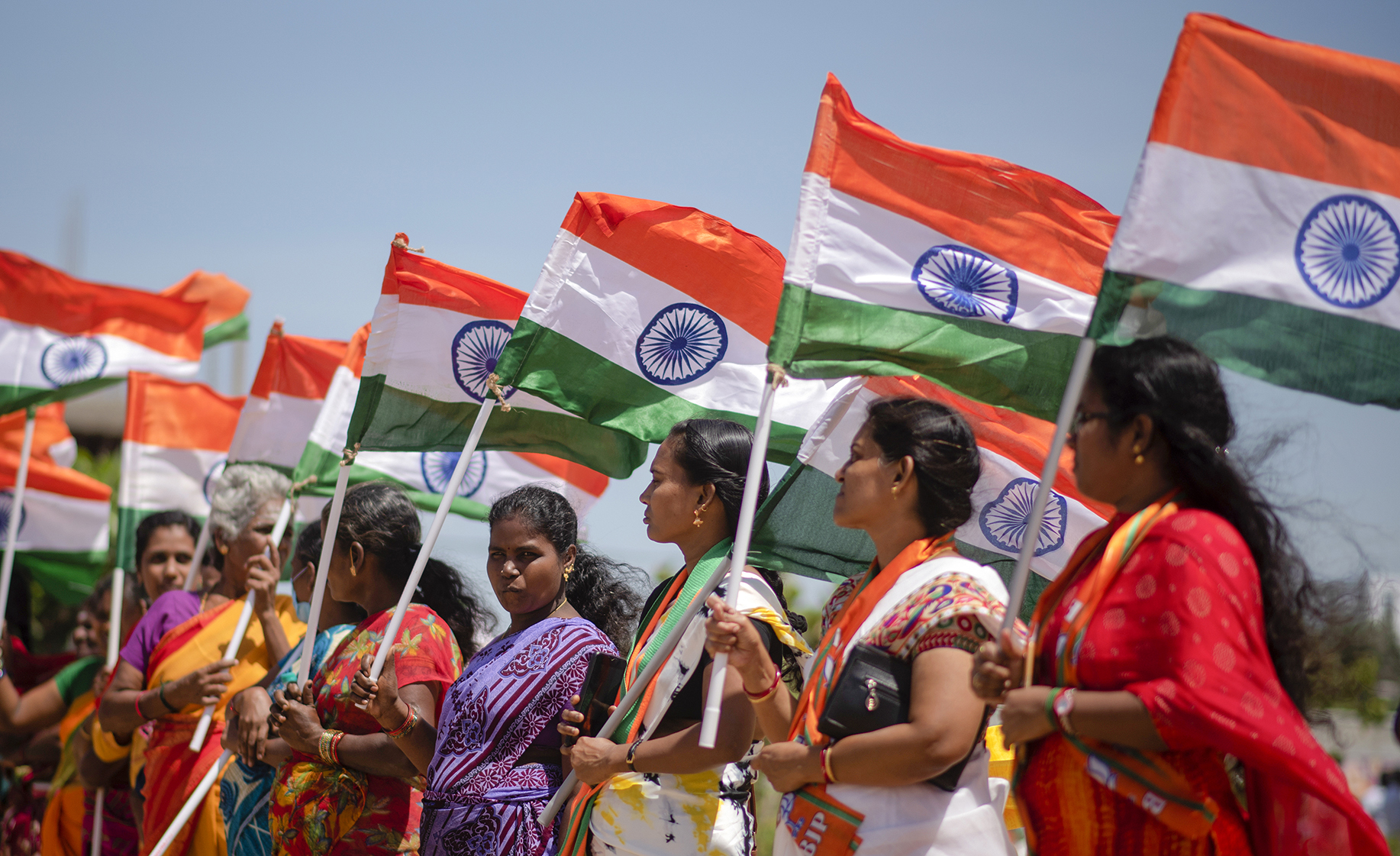
As an opposition parliamentarian pointed out in Parliament recently, the government of India is obsessing about how citizens must decorate their DPs at a time when the country’s GDP seems to have nosedived, heralding the onset of a severe economic crisis marked by sharply rising food prices (always and everywhere a catalyst of social unrest) and the shifting of the burden of taxation increasingly on to the backs of the working poor.
In the run-up to 15 August, lush public service videos are being broadcast on television channels and lavish picture spreads published in newspapers, magazines and social media that show various combinations of happy families, homes and fluttering flags.
These images conceal the cruel irony of a population under siege and facing regular assault, not from external forces, but from the regime that it has elected, “democratically”, to rule over itself.
This regime perfects and fine-tunes the legal instruments of repression and coercion forged by its predecessors, throwing dissenters into prison, harassing opposition figures with intrusive penal provisions and ruling through a combination of legislative bluster, patronage to aggressive non-state right-wing militias, arrests, detentions and demolitions.
Kashmir: the end of democracy
The trouble is, many Indian Muslim families, like that of Afreen Fatima and her father, may not be in a position, at least at this moment, to celebrate and advertise their domestic bliss under the fluttering tricolour. Kashmiri Muslims are still smarting from the sudden and vindictive abrogation, three years ago, on 5 August 2019, of the constitutional provisions that guaranteed a semblance of mainly symbolic autonomy to the territory of Jammu & Kashmir, within the Indian Union. Jammu & Kashmir continues to be administered without a representative government, and under laws like the Armed Forces Special Powers Act and the Public Security Act.
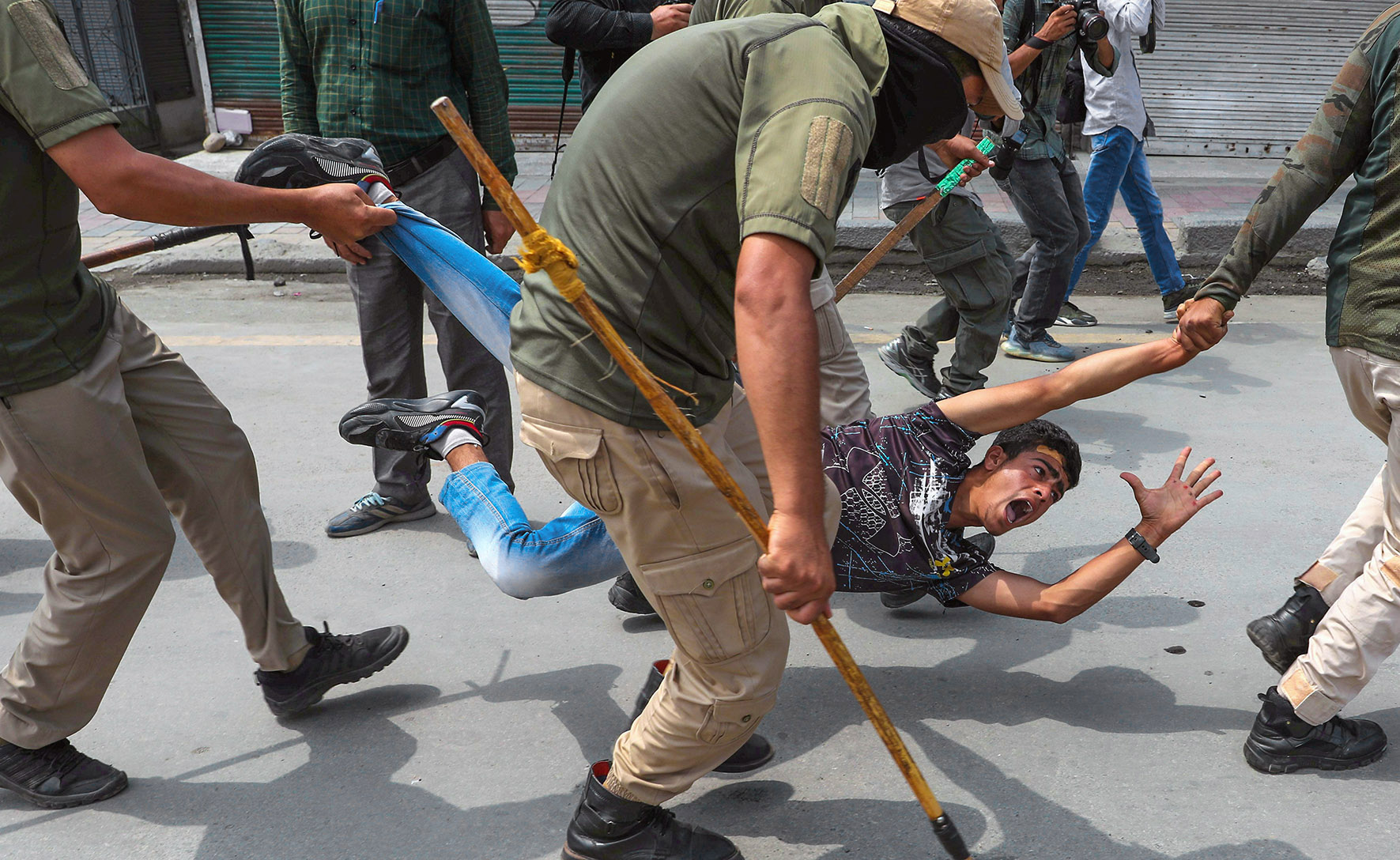
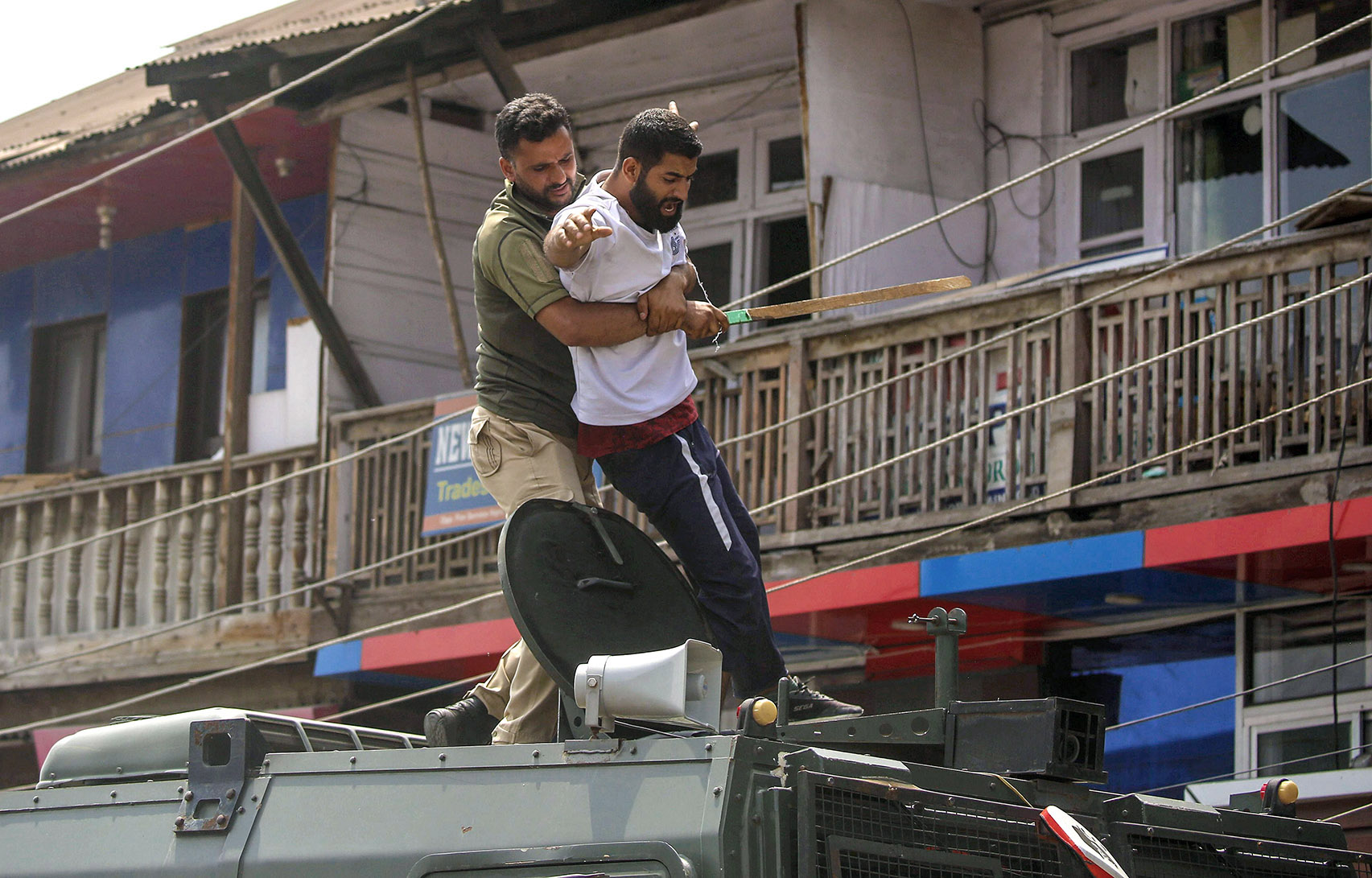
As for other, non-Kashmiri Muslims who happen to be Indian citizens, some, like in the instances mentioned above, don’t have roofs over their heads at the moment.
Their homes have not been lost to earthquakes, wildfires, floods or any natural calamities. They have fallen prey to a rampage of predatory bulldozers commandeered by the state, broadcasting their mini-apocalypses to a national television audience, live, as distraught men, women and children try to retrieve belongings, personal effects, and most importantly, documents, from the debris of their homes, from under the gaping steel jaws of the bulldozers.
What they are witnessing is not just the destruction of their actual homes, but of the idea that India, as a “secular” country, is as much their home as their Hindu co-citizens’.
Documents in the debris
The search for documents in the debris is especially poignant, as it indexes a very specific anxiety that Indian Muslims, especially if they are poor, have experienced ever since the Citizenship Amendment Act (the law that Afreen Fatima was campaigning against) cast a shadow on the natural claim that Indian Muslims could make to citizenship.

Suddenly, that entitlement seemed to require papers, documents, of the kind that many people simply did not have. And so, the fear of the bulldozer became a contagious nightmare.
These bulldozer campaigns, inaugurated by the chief minister of the north Indian state of Uttar Pradesh, the extremist Hindu monk turned politician, Yogi Adityanath, are supposed to be responses to “encroachments and illegal constructions”. The incessantly rhythmic and high-decibel soundtracks of Adityanath’s election campaign videos have featured more than one eulogy to the bulldozer, which is seen as his lethal hammer against minority populations in his state.
Adityanath’s bulldozer fetish has several imitators, such as his counterparts, the chief ministers of other states like Madhya Pradesh, Assam and Karnataka that are ruled by the Bharatiya Janata Party (BJP).
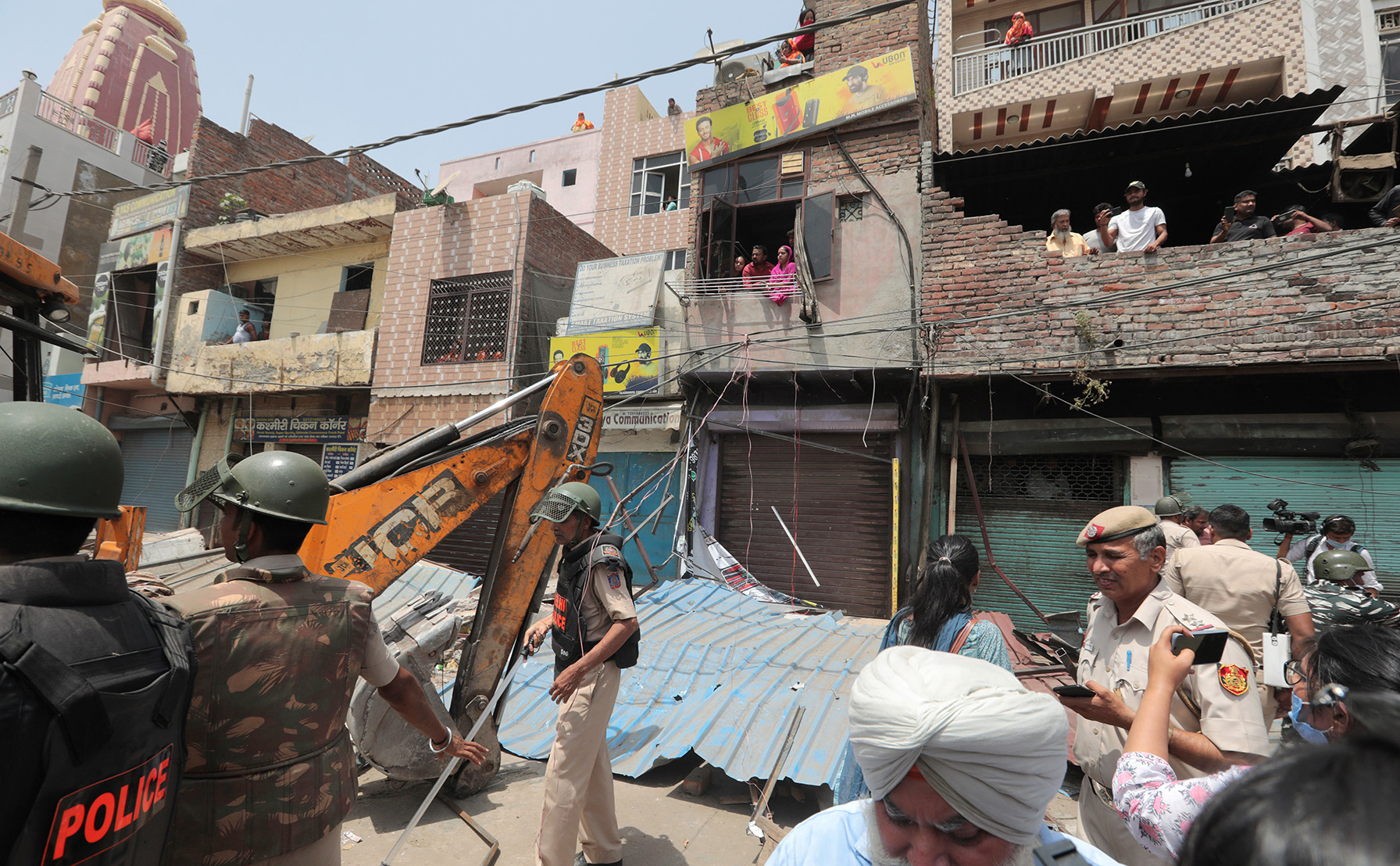
Even the national capital of Delhi, which (as a state or province) is nominally not under BJP rule, (but its police forces are under central government jurisdiction, and therefore under BJP control because the BJP is in power at the centre) witnessed an episode of a vindictive bulldozer run on 20 April in Jahangirpuri, a neighbourhood with a substantial Muslim presence (settled by people displaced by violent bulldozer campaigns in the old city of Delhi during the internal emergency of 1975-77), because of protests by Muslims against Hindu mobs shouting provocative threats during a “religious procession”.

The Jahangirpuri episode of the sordid bulldozer saga was interrupted by legal interventions by the Supreme Court of India after notice of the gross illegality of the action was given by a few left-wing politicians and advocates.
But by the time this could occur, the bulldozer deployed in Jahangirpuri had already destroyed the outer wall of a mosque.
Genocidal threats
In reality, the bulldozer campaigns consist of punitive measures taken against Muslims who have protested against the repeated recent instances of Islamophobic hate speech against the prophet of Islam by public figures close to the ruling Hindu nationalist BJP, accompanied by regular threats of genocide against the Muslim population by extremist Hindu demagogues, either on social media, on TV, or in aggressive street rallies. The Hindu extremists, many of them religious figures, who have amplified actual calls for genocide and threats to murder and rape have hardly been touched by the law.
When Muslims have taken to the streets to voice their anger against these acts of humiliation and threats of genocide, particularly in states ruled by the BJP (Uttar Pradesh, Madhya Pradesh and Assam), they have had bulldozers visit their homes.
The thought of planting a flag on the ruin of your home, demolished by the state, is a marker, not of pride, but of humiliation.
Sometimes, it takes a lifetime to build a house, brick by brick, door by door. Many of the Muslim families who have seen their homes being demolished live in the state of Uttar Pradesh in north India. These families chose not to migrate to Pakistan when British India was partitioned, and the two new dominions, soon to be independent republics, of India and Pakistan came into existence, in 1947. Now, in the 75th year of Indian independence, the choice that their ancestors made to stay in the country they were born in is being mocked by the bulldozer.
The transformation of bulldozers into totems means that those who worship them celebrate destruction. Bulldozers are to peacetime what tanks are to war. The battlefield is life itself. Bulldozers can only break things. They cannot make anything. Those who rule India under the sign of the bulldozer are trying to break an entire people.
This is one of the greatest tragedies of our times.
Shuddhabrata Sengupta is an artist with the Raqs Media Collective. He lives and works in Delhi, India and is a regular contributor (with social and political commentary) to The Wire and The Caravan.
